The combat planes built between June 1940 and July 1941 conformed to a standard with gloss green uppersurfaces and gloss light blue undersurfaces.
This change was related also to the development of new alkyd paints A-18f light blue and A-19f green for metal, and the introduction of AII light blue nitrocellulosic lacquer for wooden/fabric undersurfaces aside AII green already in use for uppersurfaces.
A new directive tried to make some order in the national insignas: before 1940 were used plain red stars, or red stars with black border, or red stars with black borders and thin black circle inside; in 1940, only red star with black outline became the official insigna.
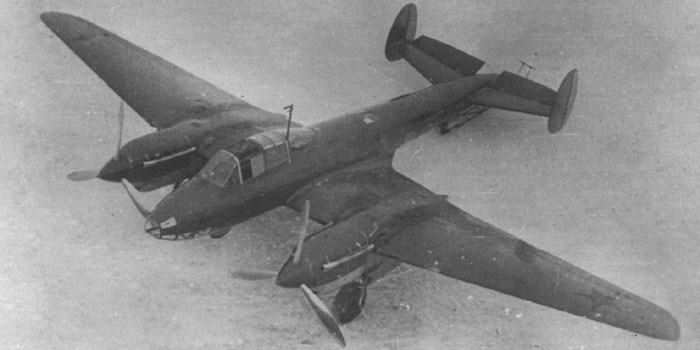
A factory photo, showing the uniform green uppersurfaces and the stars over wings, as usual in this period.
Early Pe-2s, being all-metal planes, were painted with alkyd A-18f gloss light blue and A-19f gloss green paints.
The prop blades were unpainted.
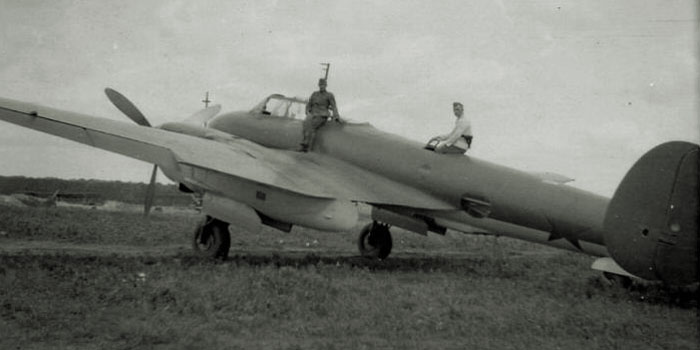
On 20 June 1941, the last day of peace, it was published an order of NKAP
(the Ministry for Aeronautical Industry) to paint all planes with a new standard
camouflage within one month.
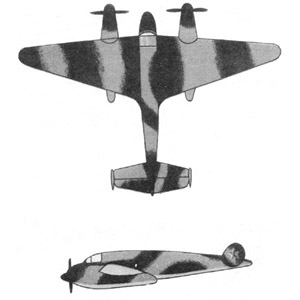
Already existing planes with uniform green uppersurfaces had to be added with matt black (A-26m oil paint for metal planes, and AMT-6 nitrocellulosic lacquer for mixed construction planes). Undersurfaces presumably preserved the original finish in A-18F or AII light blue.
For newly built planes, the instructions said to utilize matt light blue for undersurfaces (not specified what type of paint, but all previous light blue paintings were gloss, so they have to be A-28m for all-metal planes and AMT-7 for mixed construction planes).
Apart for some Yaks, the first known photos of planes with the new green/black painting scheme are dated to July 13, 1941.
Many maintenance manuals of the first years of war describe these paints: dope AMT-4 green, AMT-6 black and AMT-7 blue enamel or oil A-24m, A-26m and A-28m of the same colours. Oil colors were less utilized, also because AMT colors can adhere well to primed metal surfaces.
Despite their name (M= matt), AMT colors were semigloss when new, and turned to matt finish with ageing. Occasionally, they could have been overpainted with a layer of gloss varnish AB-4-d to improve aerodinamicity and gain some speed.
While AMT-4 and 6 were codified in July 1941, AMT-7 was codified in August 1941, and is not mentioned on earlier manuals; earlier AII light blue remained in use in parallel with the darker AMT-7 in the first years of war.
Oil enamels were intended to be sprayed on the exterior metal surfaces, even unprimed. Painting with a brush meant poor paint properties, and was allowed only as a second choice, ex. for repairs.
Prop blades were now fully painted black.
The order of June 1941 changed the national marks of planes too. Red stars, of plan tipe or with thin black outline, were now placed in six positions:
- one on each side of fuselage (not always, on twin-engined planes),
- one on each side of rudder/stabilizer,
- one on the undersurface of each wing.
Note the deletion of stars over the wings, and the introduction of new ones on the tail.
Sometimes stars were outlined with white, silver or yellow borders, but this wasn't a standard.
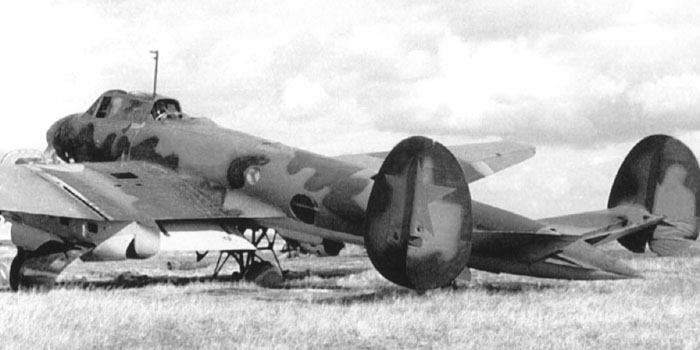
In the confusion of the first days of war, some improvised and not-standardized camouflages did appear.
Here is Pe-2 with a not fully standard original camo scheme, including black and at least a third color over a green base.
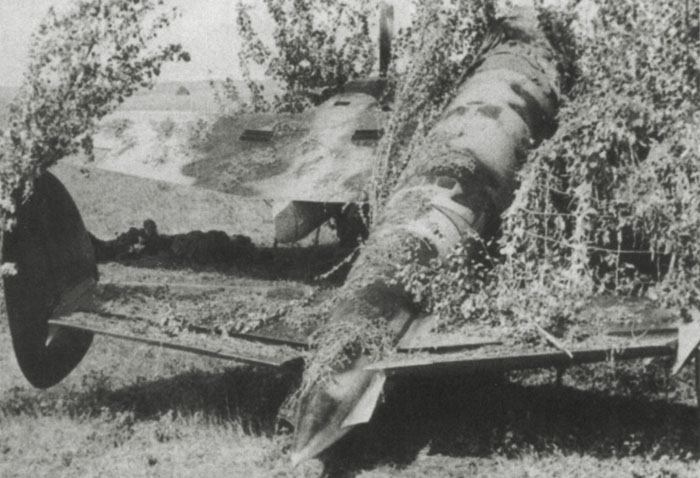
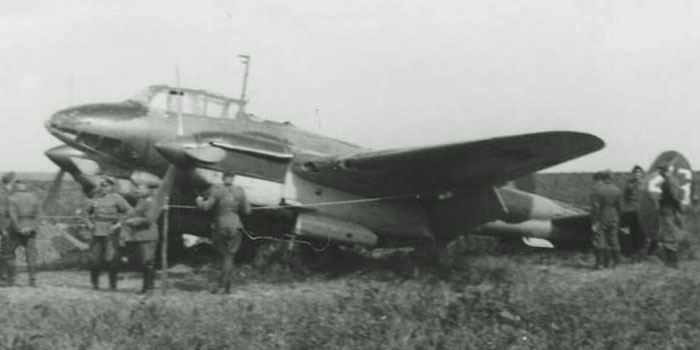
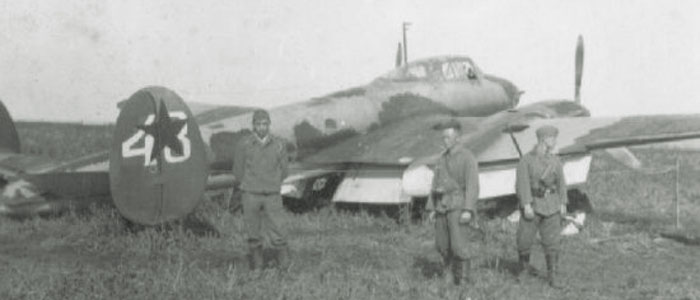
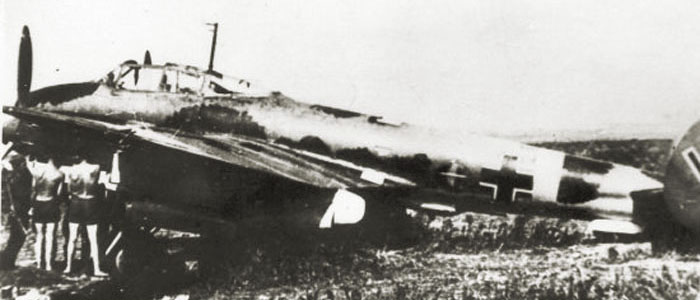
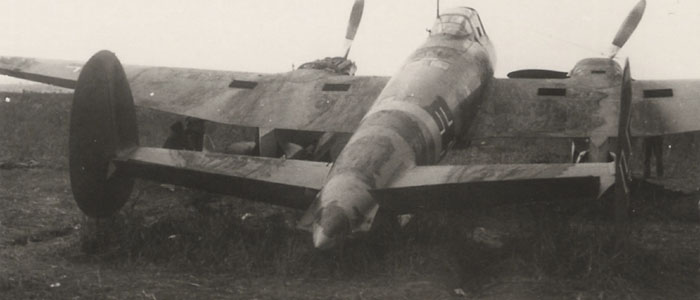
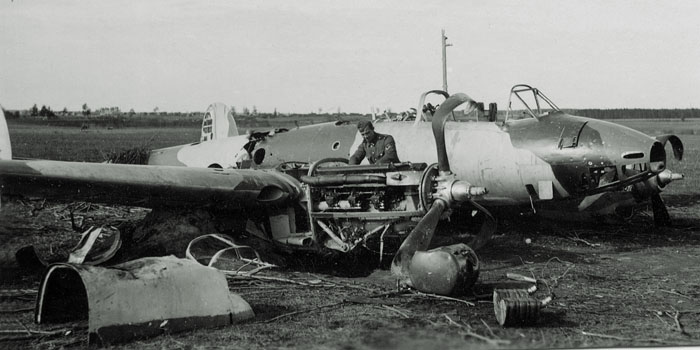
This polichromatic camouflage looks to have been applied to many planes, probably of the same unidentified unit, in June/July 1941.
To know more, go to:
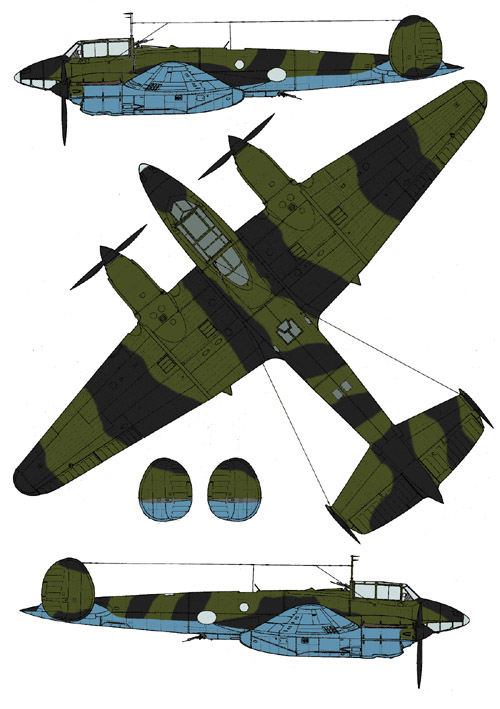
Apart for the first attempts, the camouflage of Pe-2 is standardized enough, and follows a reinterpretation of the general template of NKAP (Minister for Aviation Industry) of 1941 where the 'balls' are transformed into a band passing over the fuselage.

As one can see on the photos, the camo has some variants:
- The bands can be both sharp or blurried.
- The black paint of the spinner could extend briefly over the engine cowlings.
- The camouflage could extend more downward on the cowling sides; in general, the later the production stock, the lower the line.
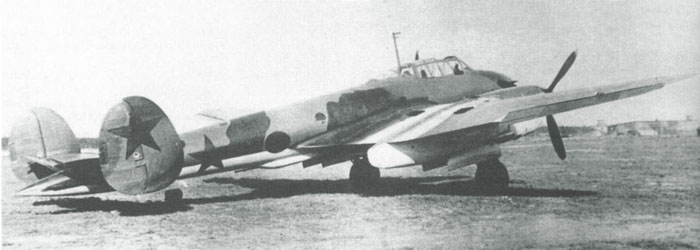
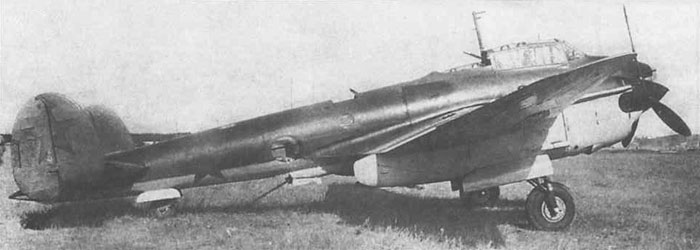
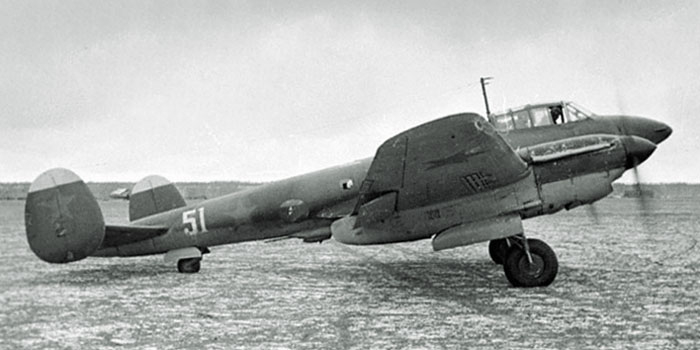
Above:
Pe-2 N°.5-33 at NII VVS, September 1941, The camouflage in black over green is particularly evident on the fuselage, while it's more blurried on the tail and wings. The light bands on the wings behind the engines are due to hot fumes. (From Pe-2 Peshka of Smith, ed Crowood)
These images shows well the standard black-green camo scheme of Pe-2s of 1941-43. Some planes had sharp bands, some other ones blurried, but the good standardization of the pattern is evident.
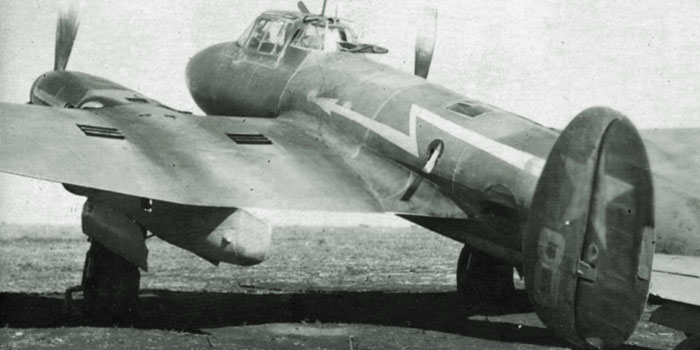
Although faded, this Pe-2 silver 8 seem to show the same camouflage and a beautful lightning on the fuselage.
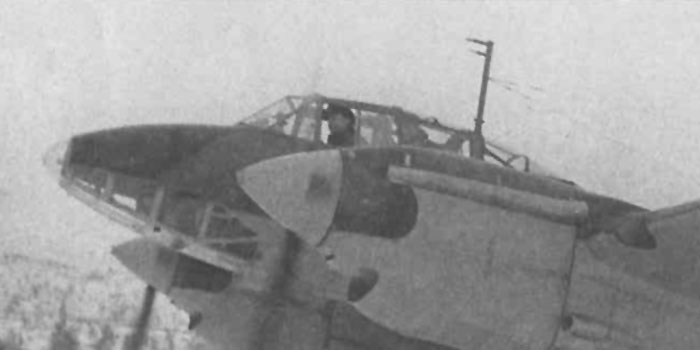
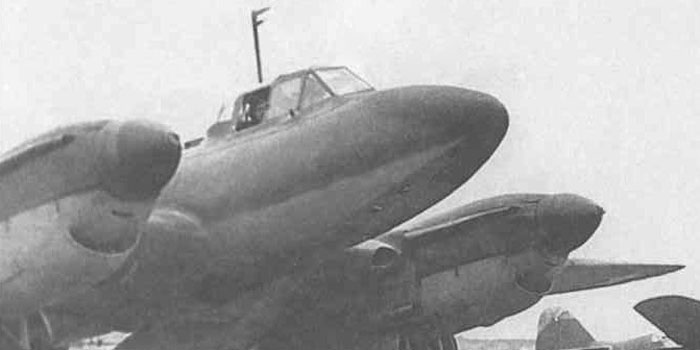
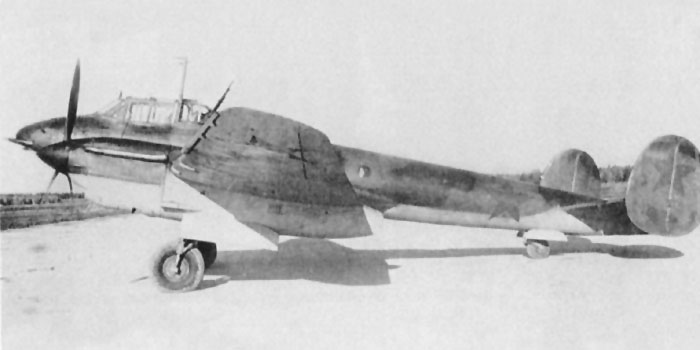
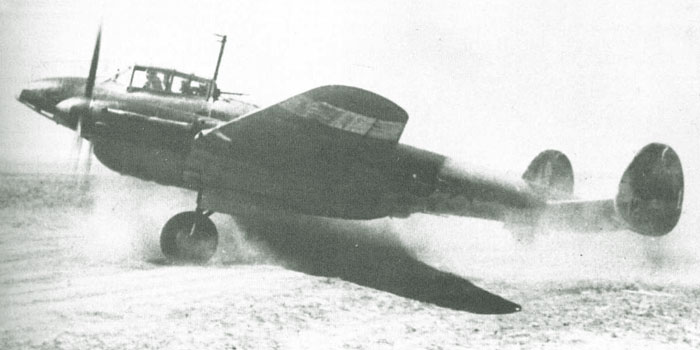
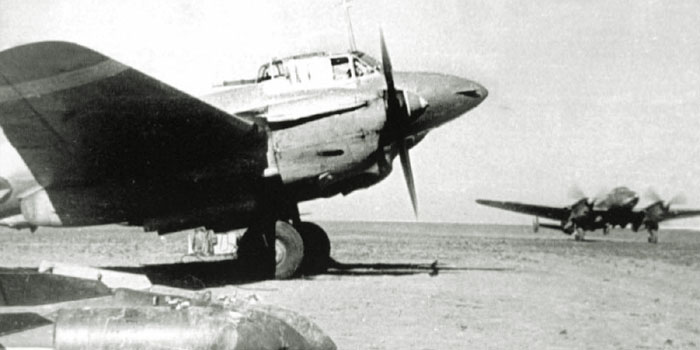
Another plane, series 205, of the same unit, but this could bear a different camouflage, probably the green-dark grey-light brown one of late 1943, because the typical black band over the nose of usual black-green camo doesn't appear on the closer plane, only on that on the background. According to Pe-2 in action, the spinner is painted (from front) yellow, red, white, black.
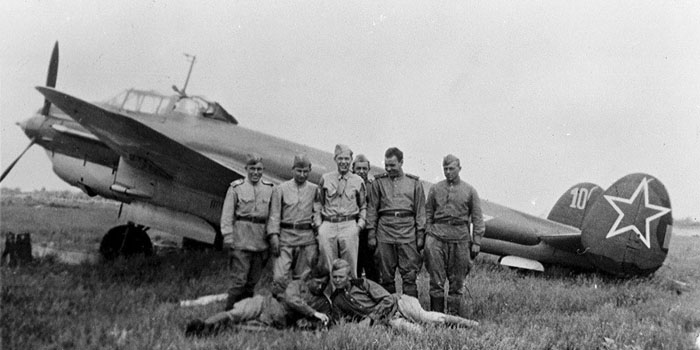
The directive n°2389/0133 of July 3, 1943, gave new instructions to paint the Soviet warplanes:
- the upper and side surfaces of all fighter aircraft were to have two colors: greyish blue and dark grey in the same scheme;
- upper and side surfaces of all types of aircraft but fighters had to be camouflaged in green, light brown and dark grey (black for Il-4 and Pe-8);
- the red stars remained in the same six positions of before, but were addictioned with a thick white outline and, more externally, with a further thin red outline.
- the directive applied to new planes and those in repair shops; it wasn't required that operative units repainted all their planes.
| Nitro lacquers for mixed construction planes | Oil enamels for all-metal planes | |
| light brown | AMT-1 | A-21m |
| dark green | AMT-4 | A-24m |
| black | not needed | A-28m (for Il-4 and Pe-8 only) |
| light blue | AMT-7 | A-28m |
| blue-grey | AMT-11 | not needed for non-fighter planes |
| dark grey | AMT-12 | A-32m |
The directive assumed that the non-fighter planes had to be delivered with the new camouflage starting from August 1, 1943; in the days before, black had to be replaced with dark grey.
In case of absence of dark grey, this would have been replaced by a mix of light blue and black.
The directive contained 15 camouflage schemes for many types, of which 2 were for Pe-2.
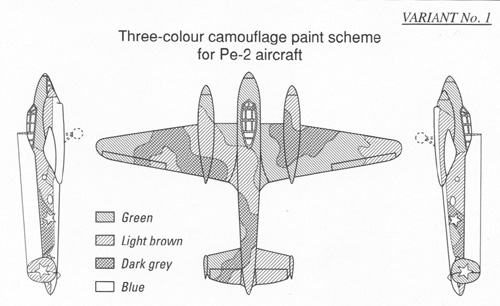
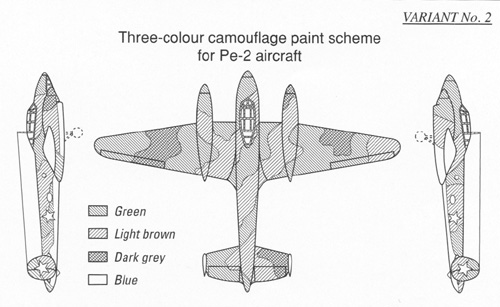
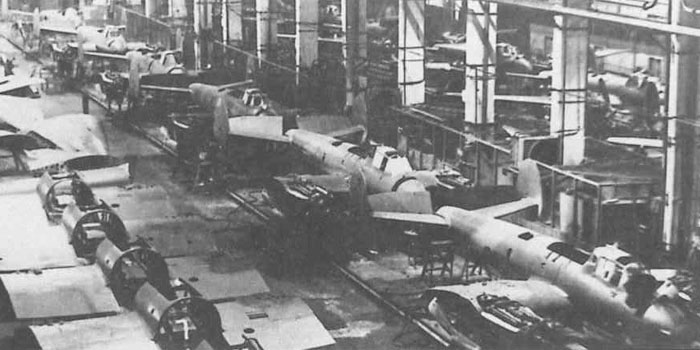
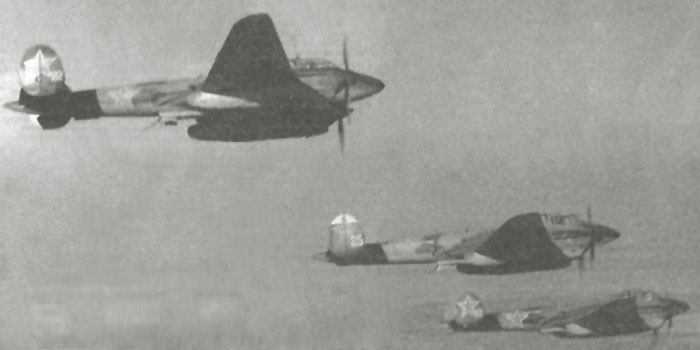
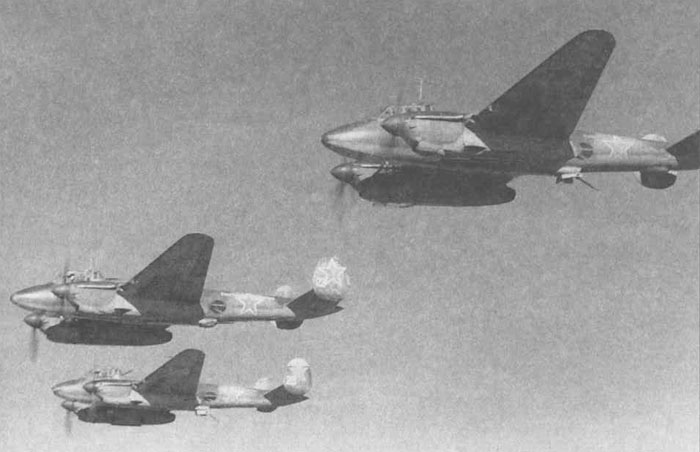
Two photos of Pe-2s showing the previous black-green camo of 1941, easily recognizable by the black band over the nose and over the navigator's windows
eventally modified with light brown and white-bordered stars after hte summer of 1943.
The light brown repaintings are particularly evident on the rear fuselage of plane with the white tail tips.
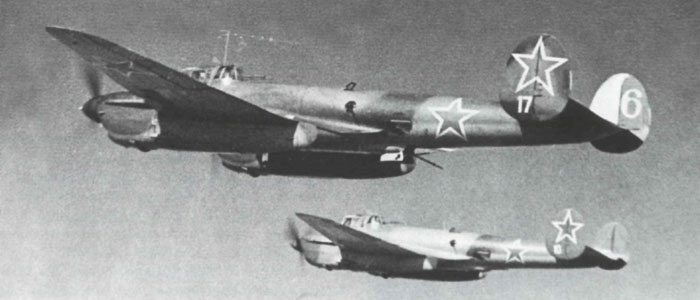
While the closer plane (white 17/6) gives the idea of a black-green plane, eventually updated with some light brown on its back.
The second plane (white 15?) corresponds better to the 1st template of 1943, but the black band on the fuselage seems to reveal that it is a black-green plane, repainted with light brown bands; on bw photos, the dark grey has little contrast on the green, contributing to the difficulties of interpretation.
Note the use of numbers on the inner side of tail surfaces, relatively common on Pe-2.
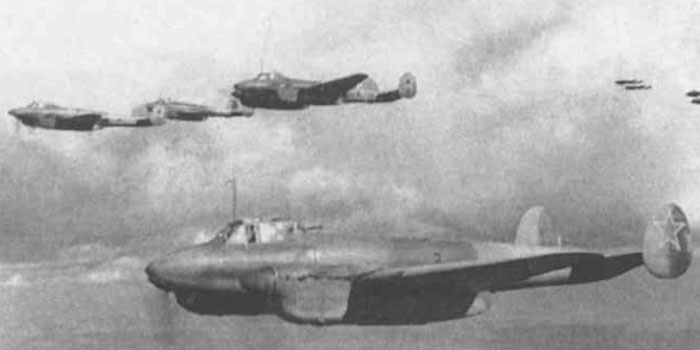
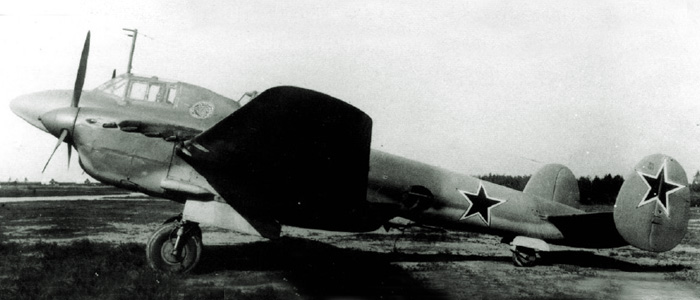
The camouflage of these Pe-2s looks not to conform to neither of the 1943 templates; the rear fuselage and tail looks to have received some repainting with a light color (light brown or blue-grey?)
This trainer looks to conform to the same color succession.
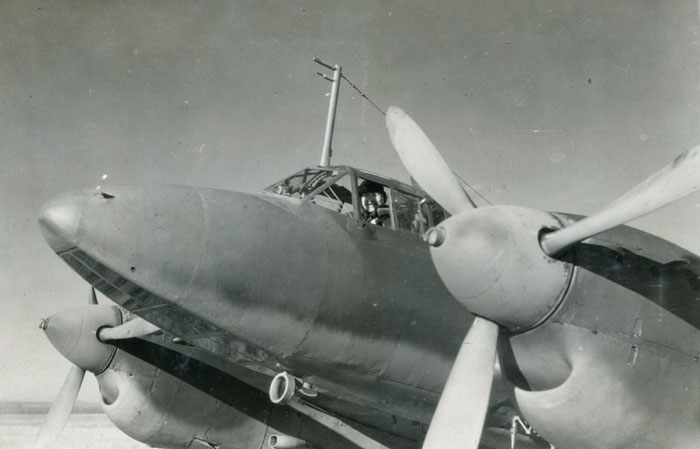
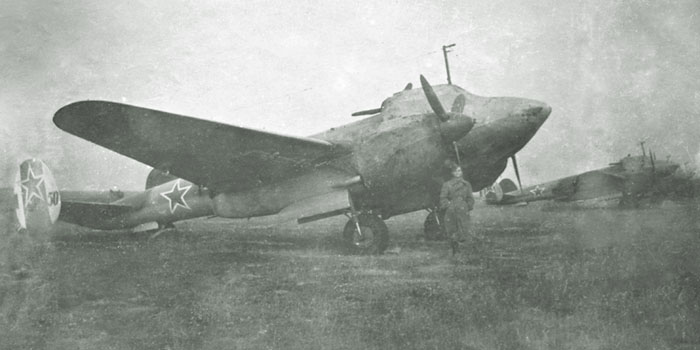
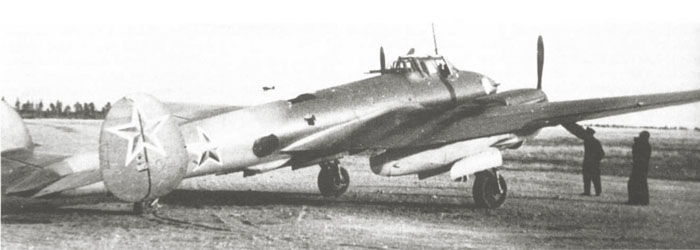

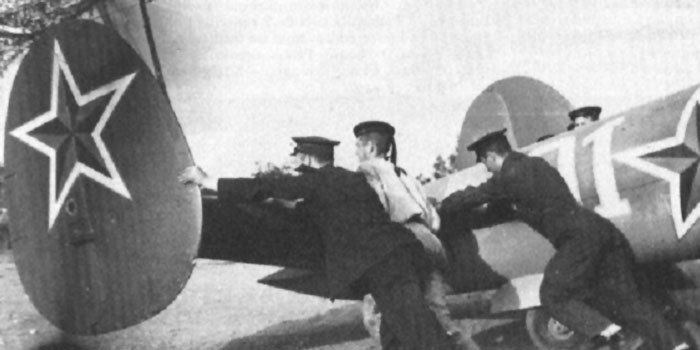
 Left: Pe-2
white 01 of Lieutnant Colonel V.I.Rankov, 12 Group PAP, Baltic fleet, summer
1944. Note the kremlin stars and the guards emblem on what could be a 3-shades
camouflage resembling to the 1st template, but with grey and green inverted
on some parts (or, perhaps, the grey appears lighter than the green).
Left: Pe-2
white 01 of Lieutnant Colonel V.I.Rankov, 12 Group PAP, Baltic fleet, summer
1944. Note the kremlin stars and the guards emblem on what could be a 3-shades
camouflage resembling to the 1st template, but with grey and green inverted
on some parts (or, perhaps, the grey appears lighter than the green).
It seems that the plane has some light repaintings on its rear fuselage, that some artist interpreted as light blue, but the best photos show that there is a border line between the light camo color and the undersurface. (From Pe-2 Peshka of Smith, ed Crowood)
The same plane is pushed by ground crew. Again, many loops resemble the 1st template, possibly with green and grey inverted in some parts.
The odd 01 could have a silver outline.(From Pe-2 part 1, Armada)
Right: This photo of Rankov shows that the star under the wing was normal, not a kremlin star.
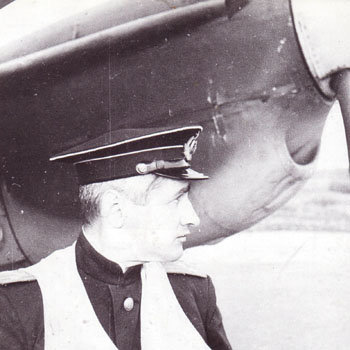
Right: this image shows Rankov and the white spinner of his plane.
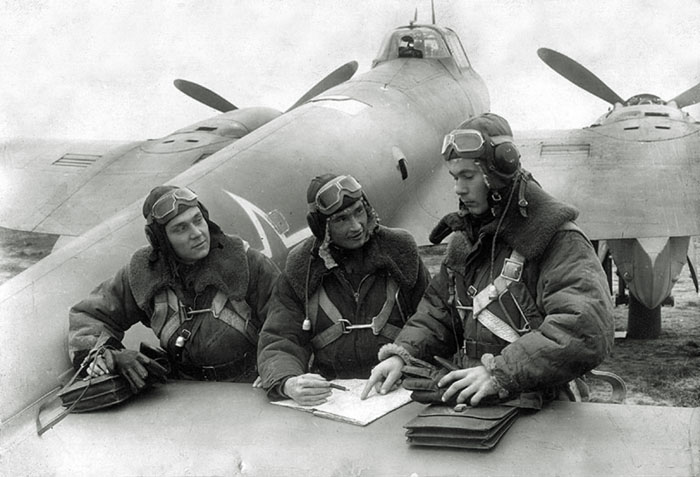
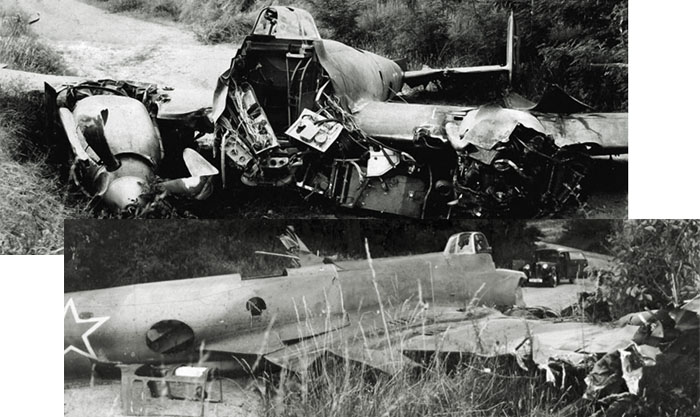
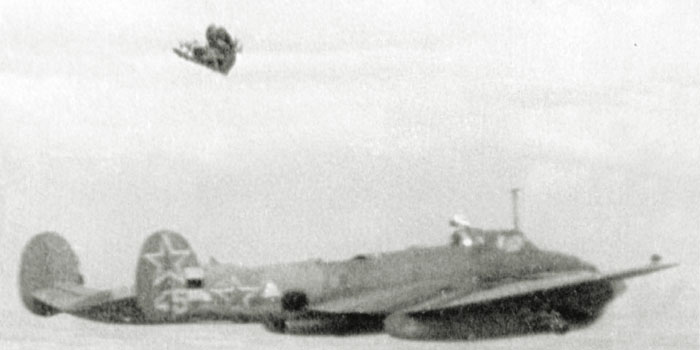
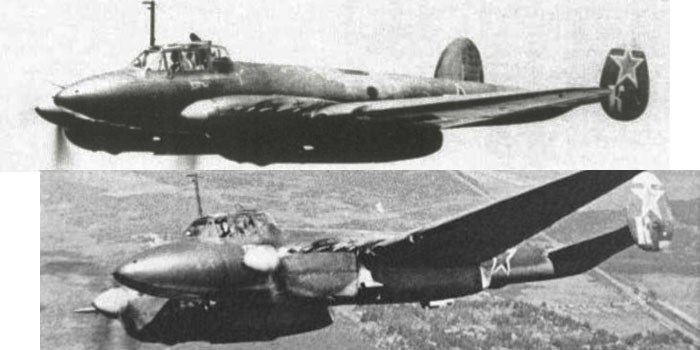
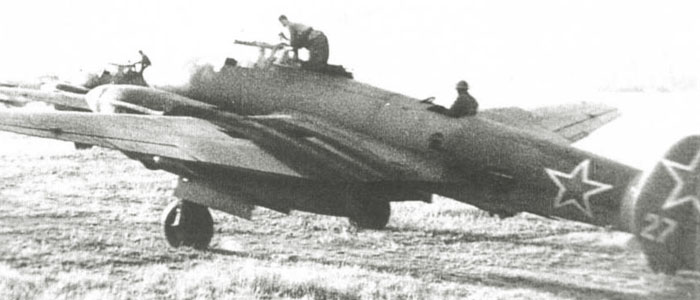
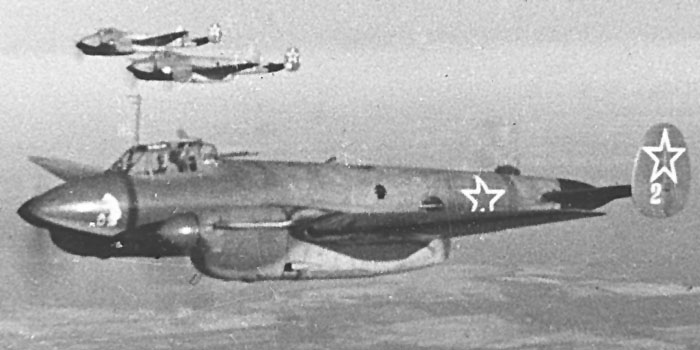
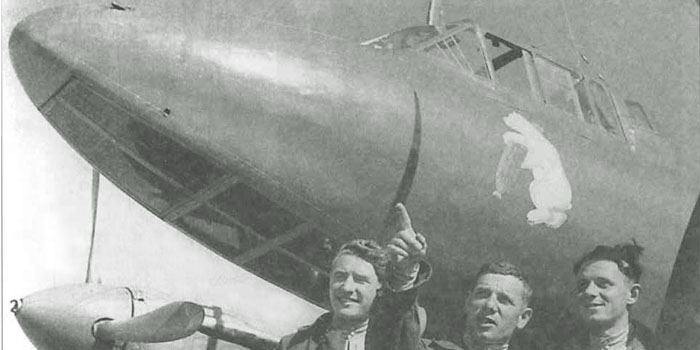
A detail of the same plane and its crew. The picture looks to represent a polar bear embracing a bomb. (From Pe-2, Armada)
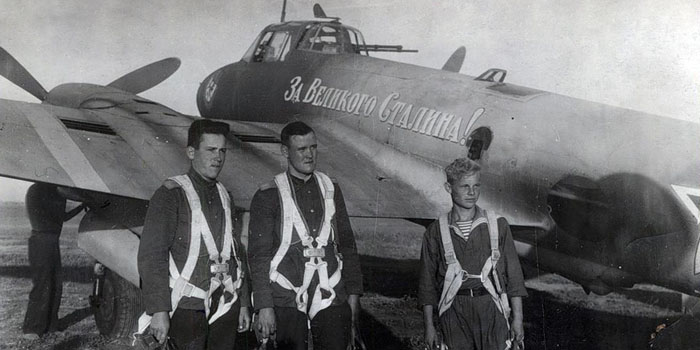
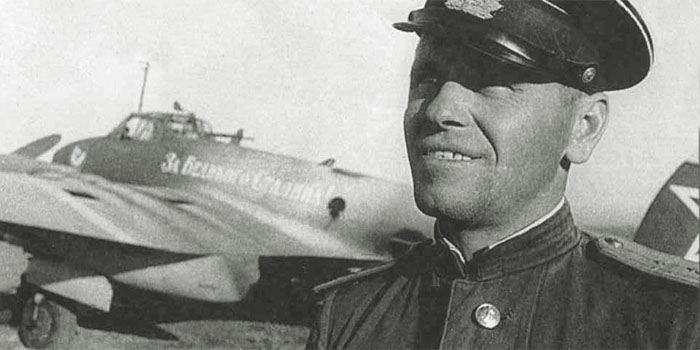
Pe-2 series 205 of 40 GvBAP, Black Sea Fleet, in 1945. The slogan Za velikogo Stalina means for the Great Stalin, and has been seen on other planes of the same unit. Note the Guards emblem on the nose. The camouflage seems compatible with the 1st template, but the light look of the uppersurface of the wing let many doubts.
Pilot A.A. Gnedoy in front of the same Pe-2. Note a white identification band on the wing. The wing itself gives strongly the idea of a wide, if not complete, repainting with light color (light brown or grey?). (From Pe-2, Armada)
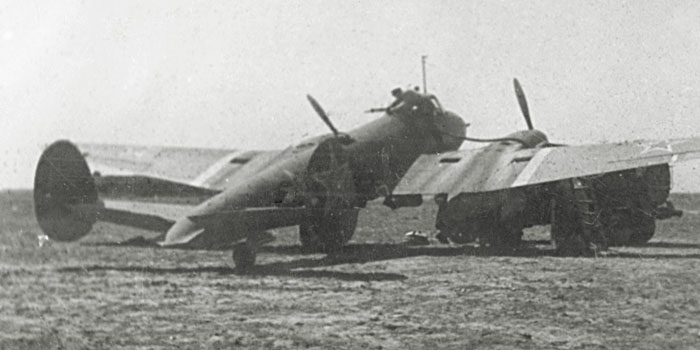
Another photo of Pe-2 dated 1943. Unfortunately the camo, if any, is unrecognizable, but the stripes and stars on the wings are noteworthy.
It could be an example of a Pe-2 with uniform green upper surface, not prescribed by NKAP directives but described by some veterans (see Anisimov)
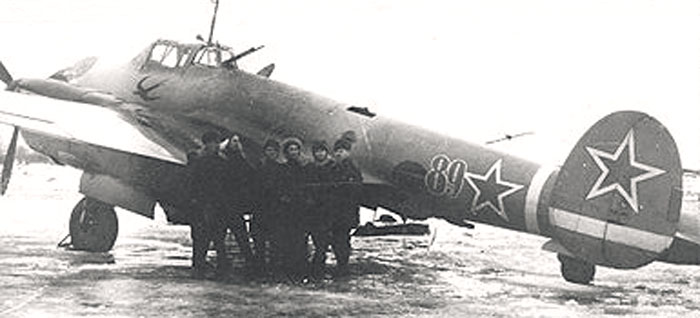
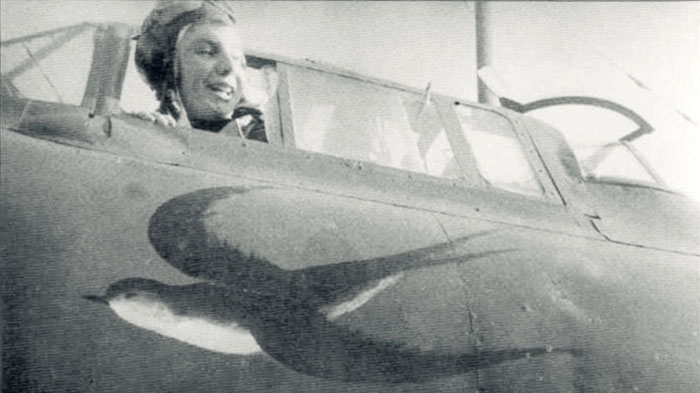
Pe-2 n.89 of 125 GvBAP flown by Ekaterina Fedotova, with navigator Klara Dubkova and radio operator/gunner Antonina Khokhlova.
The plane had a swallow painted on the left side of its nose, a n.89 (red with silver outline?) and white identification bands on what seems a very blurried three-shades camouflage.
The plane looks to hve the late-type separate exhaust stacks.
See http://sovietwarplanes.com/board/index.php?topic=1513.msg11093#msg11093
Images from Osprey, Pe-2 Guards units.
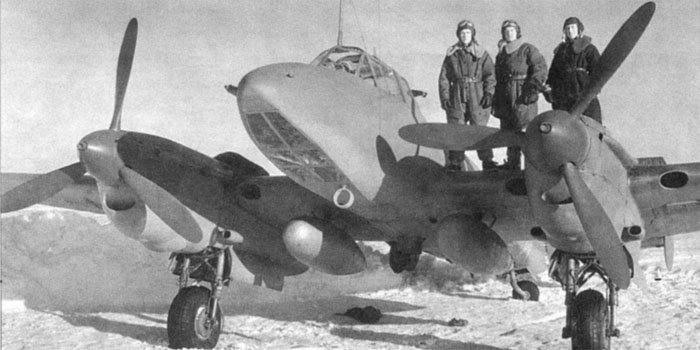
Image of a Pe-2 of 2nd Long Range Reconaissance Regiment of the Red Army Supreme Command.
A. Popov and his crew at the return from a mission in winter 1943/44.
Although it wasn't typical of the period, the upper and side surfaces of this plane look painted with solid blue-grey AMT-11, a livery surely suitable for a reconaissance plane.
Often Pe-2s of this unit were equipped with back-firing RS-82 and 132 rockets under the wings as a defence against fighters attacks and had their air brakes removed, but this is not the case of the plane of this photo.
(from Mir Aviaciya 3/2001)
In late 1944 the Soviet Air Force had altready reached a position of superiority over the German Luftwaffe and its alleys. While Germans reverted to green/brown camouflages to hide better their planes on the ground, the Soviets decided to extend to all planes the blue grey/dark grey camouflage that has been successful for fighters since August 1943.
On October 1, 1944, the Resolution n.6339 was approved, but burocratic delays retarded its publication till January 1945.
| Nitro lacquers for mixed construction planes | Oil enamels for all-metal planes | |
| light blue | AMT-7 | A-28m |
| blue-grey | AMT-11 | A-33m |
| dark grey | AMT-12 | A-32m |
The resolution included templates for many types
of planes.
Comparing those drawings to the photos, there are doubts if the directive was applied, and how; very few types respect the new templates, but many planes could have been updated, as suggested by Orlov and Hornat, by repainting blue-green over green areas and dark grey over light brown areas. This would have led to a predominance of dark grey over blue-grey, but seems to be not a common case on photos.
Many types received wide soft repainting with a light color, leaving visible part of the previous camo; one can think that this light added color is blue-grey, even if one could have expected something darker from AMT-11. Perhaps it was sometimes surrogated with a mix of light blue and black, according to the formulas prescribed in 1943 for fighters.
( sketch from 'Colors of the falcons' by Hornat and Migliardi)
Despite the inclusion of this template in the instructions of 1945, there is not any photographic evidence that any Pe-2 was ever painted according to it.
Accoding to Orlov, on Pe-2 the old camouflage was rather simply updated by overpainting:
- green fields with gray-blue paint
- light brown with dark gray, except for the paint on the left side of the tail
- dark grey should, of course, be left unchanged.
This style of repainting would generate a camouflage where the dark grey is predominant over blue grey, but from photos it seems that this was not the case of many planes.
It is possible that many Pe-2s had the light brown areas replaced by blue-grey as happened on some Il-2s, but this would be undetectable on bw photos.
It seems, instead, that many Pe-2 had a repainting where a light shade covered all the previous light brown areas, plus other ones that were previously painted in green or dark grey, generating a nearly-uniform light plane. Lacking of a reason for a so wide light brown painting, this could be the form assumed by many blue-grey repaintings. The veteran Anisimov confirms the existance of grey Pe-2s, describing them as unformly painted.
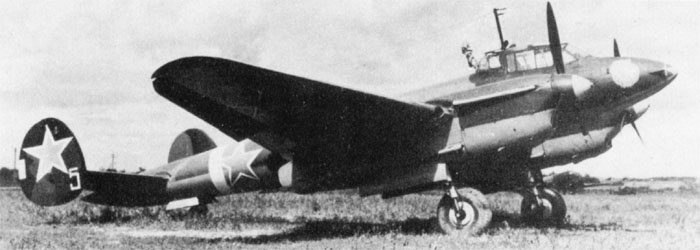
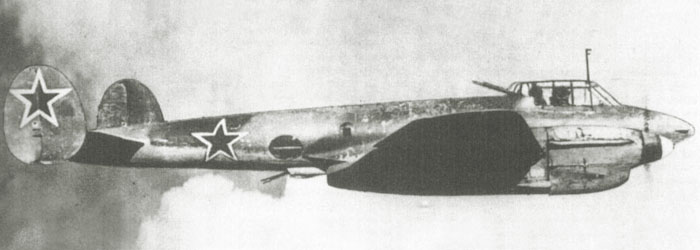
Pe-3 long-reconaissance version photographed by a NATO plane after the war. The NATO codename of this type was 'Buck'. The camo resembles as a variand of the 1st NKAP template of 1943 but, again, it is impossible to say if blue-grey has replaced the light brown.
(From Pe-2 Peshka of Smith, ed Crowood)
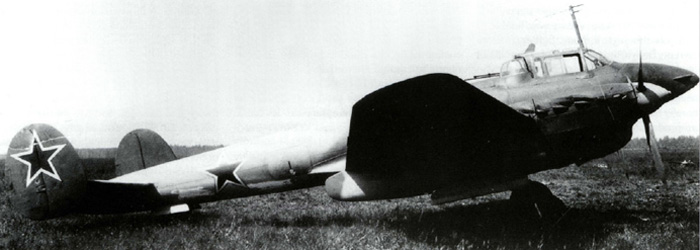
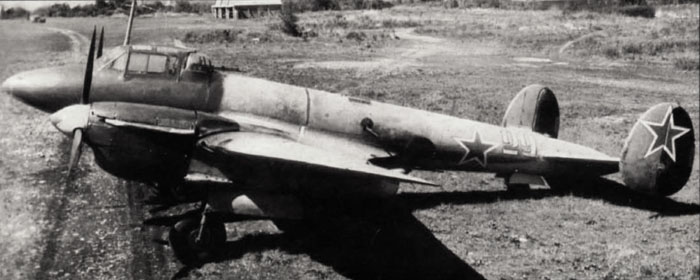
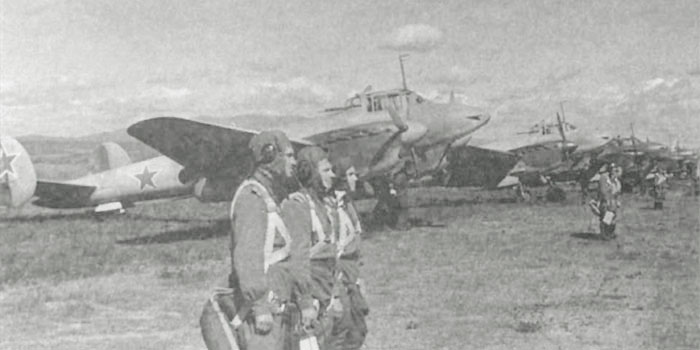
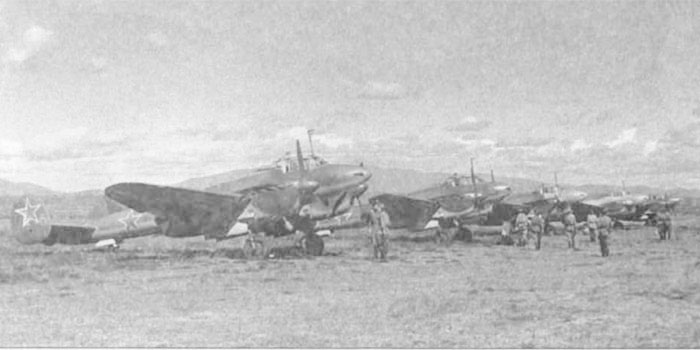
Three photos of Pe-2s showing, aside some examples with usual 3-colors camouflage of 1943, some other ones with wide light repaintings (AMT-11 or its oil equivalent?). Note that fabric-covered rudders were saved from this repainting, probably because the oil paint was unapt to fabric skinning.
These images show, aside Pe-2s that looks painted with usual 3-shades camouflage, other ones that are partially repainted with a rather light color, just slightly darker than the light blue of undersurfaces. Its identification can be only hypothized, but this practise looks to have beeen common enough in 1945. Light brown? Blue-grey, to partially accomplish to the 1944 directive that indicated grey/grey livery for all the planes of VVS, including bombers?
Such a look isn't rare, it has been seen something similar on some Il-4, Il-2 and Tu-2 too.
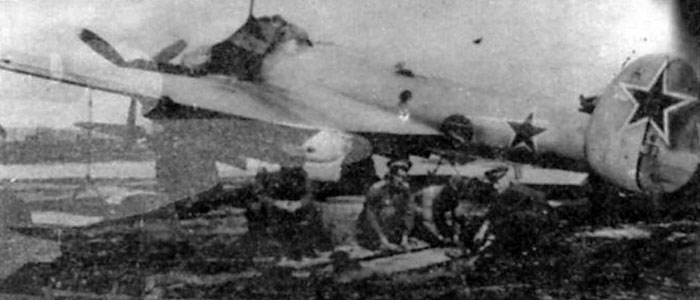
This Pe-2 photographed in 1945 near Aspern, in Austria, was nearly completely repainted with a not-so-uniform light color, probably blue-grey, leaving the previous paint visible only on its front fuselage and part of the rudder, and perhaps on the engine cowlings.
This plane has been represented on some profile as painted in grey-grey according to the template of 1945, but the photo shows clearly that it wasn't so.
(from Mir Aviatsii 2.2001)
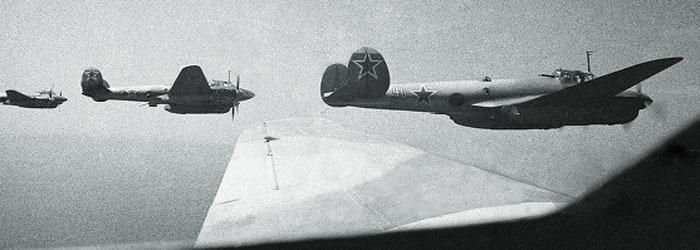
Pe-2 white 40 photographed from the navigator's position of another Pe-2.
Although not following templates, my idea is that it's representative of a two-greys Pe-2.
The bort number 40 appears thinly outlined.